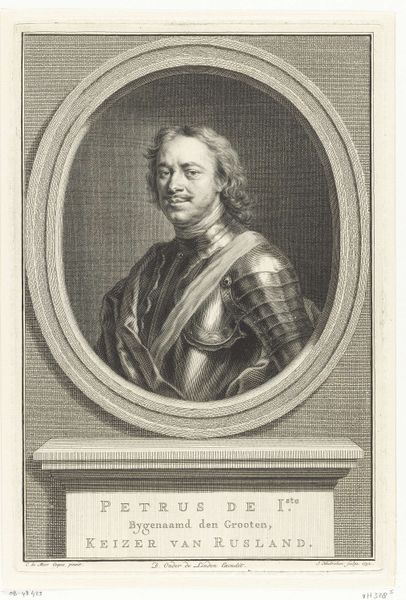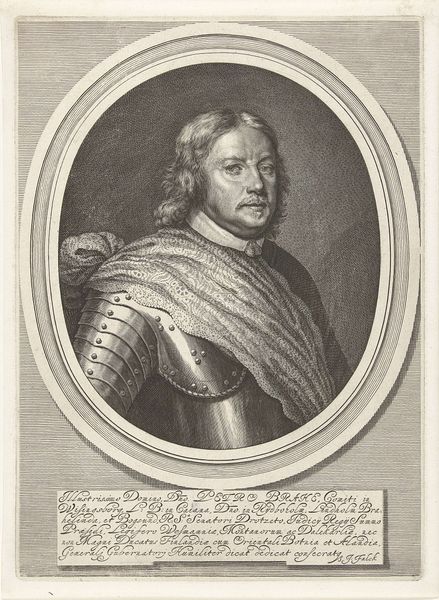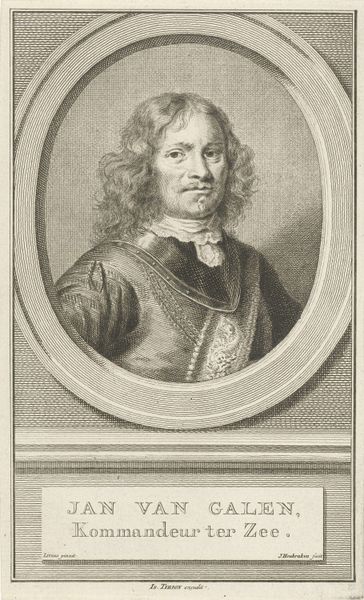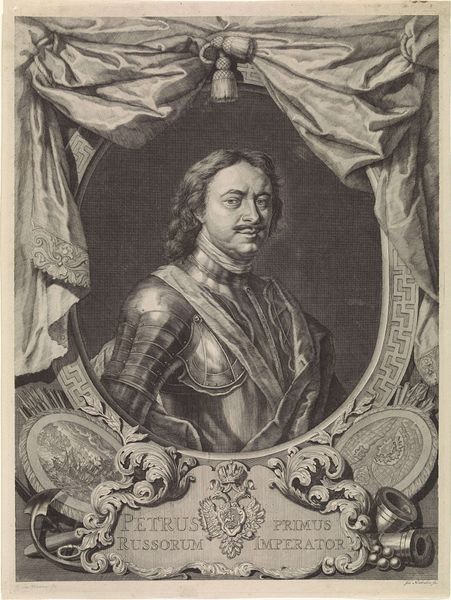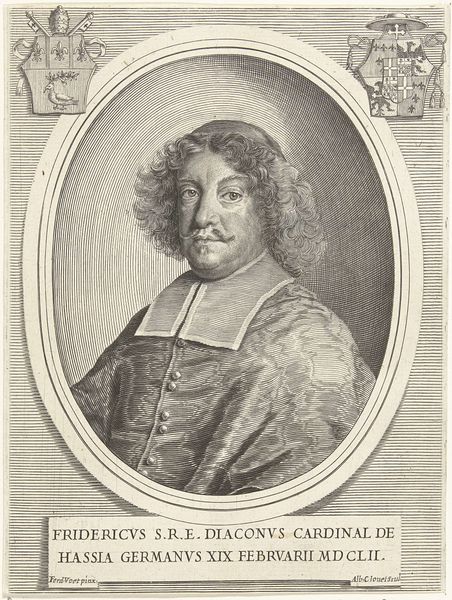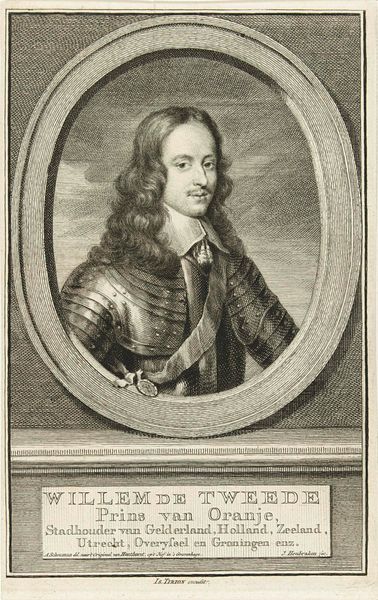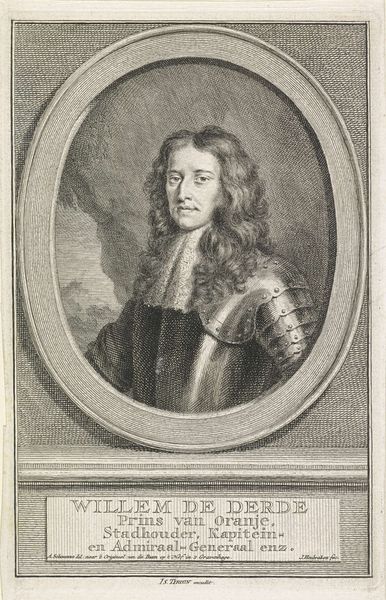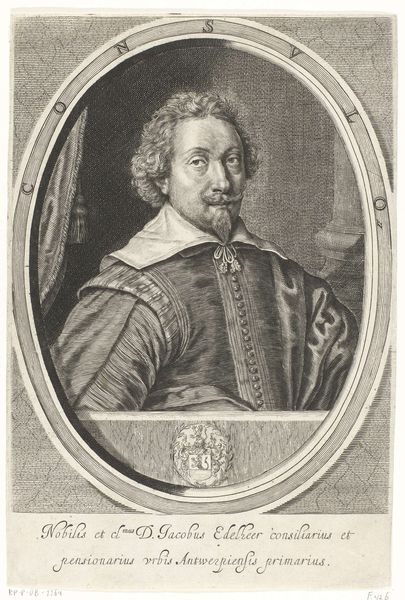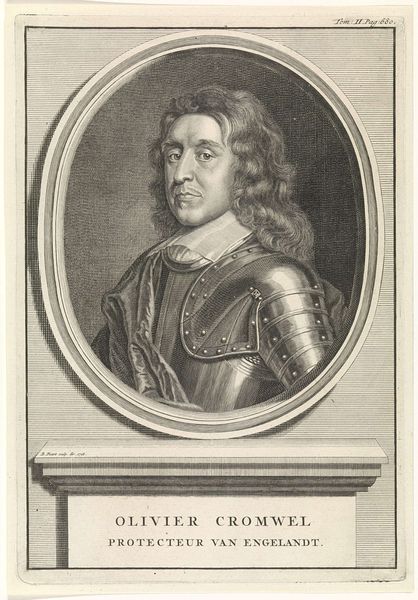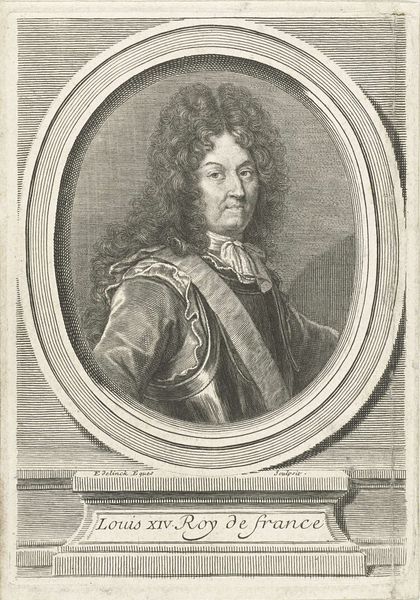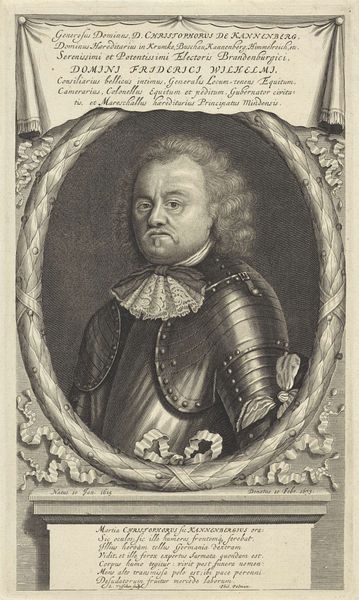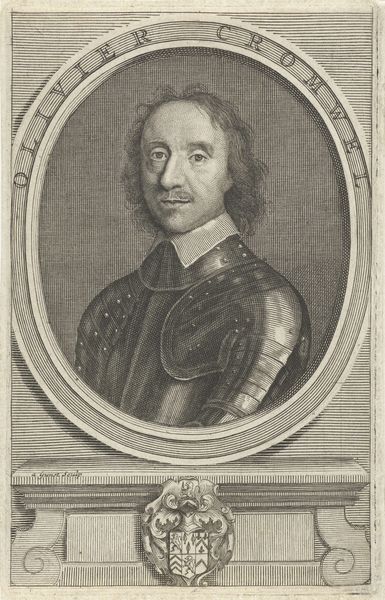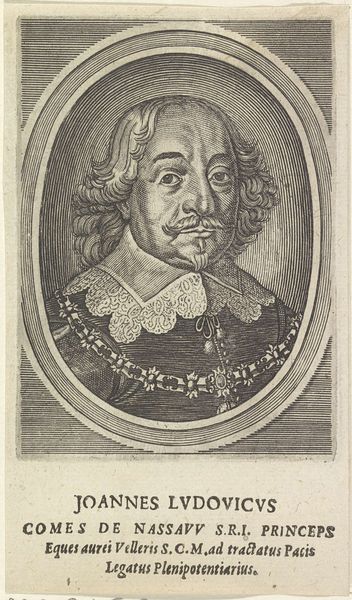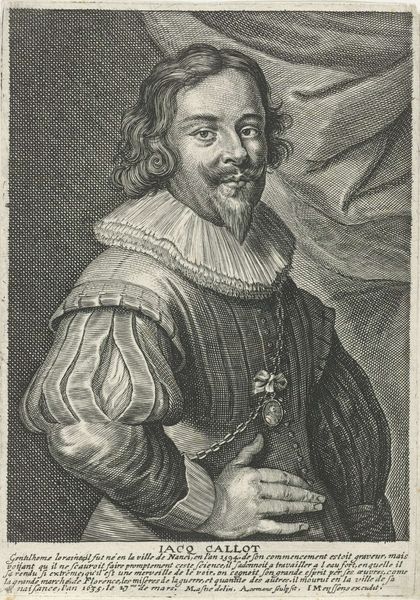
engraving
#
portrait
#
baroque
#
old engraving style
#
history-painting
#
engraving
Dimensions: height 130 mm, width 81 mm
Copyright: Rijks Museum: Open Domain
Editor: Here we have Jacob Houbraken's "Portret van Peter I de Grote, tsaar van Rusland," an engraving dating from sometime between 1725 and 1780. It’s stark, the detail in the armor is quite striking against the flatter background. What’s your take on this piece? Curator: Well, looking at this engraving, I'm drawn to the power dynamics embedded within the portraiture tradition itself. How does Houbraken's representation of Peter the Great reinforce or challenge the Tsar's authority, especially considering the social and political climate of the time and the role of powerful elites? Editor: That's a very interesting question! I hadn't really thought about it in terms of power dynamics. What about the technical aspects of the engraving, and the use of Baroque style? Curator: Precisely, the Baroque elements—the attention to detail in the armor, for instance—aren't merely stylistic. They function to project an image of strength and might, qualities that Peter I actively cultivated. It speaks to the broader construction of imperial masculinity and how visual representation played a crucial role in consolidating power. Consider also the very act of commissioning and circulating this image, think about issues such as censorship and freedom of speech that would enable or constrain such artistic output. How does that inform the narrative? Editor: So you're saying it’s not just a portrait; it's an assertion of authority and identity in a specific historical context. Curator: Absolutely! And the act of reproducing it as an engraving democratizes the image, in a way, allowing for wider dissemination and reinforcement of the Tsar’s carefully constructed image. Also, to think about the lens of queer studies or feminist theory can prompt us to think about how portraits also serve to define traditional ideals of masculinity that simultaneously privilege and confine the sitter, in ways that are worth unraveling. Editor: I hadn't considered all those layers. That’s definitely a new way of looking at historical portraiture for me. Curator: That’s the beauty of art history - continuously re-evaluating the past with contemporary theoretical tools and intersectional considerations.
Comments
No comments
Be the first to comment and join the conversation on the ultimate creative platform.
